Disclosure: This article contains affiliate links. We may earn a commission from purchases at no extra cost to you, which helps our travel content.
The morning mist hangs like a silk veil over the Mekong River as I join a small gathering of travelers and locals along the roadside. We kneel quietly, barefoot on woven mats, as the orange-robed monks appear in the distance – a silent procession that has occurred daily for centuries in Luang Prabang. This ancient ritual known as tak bat (alms-giving) was my introduction to the profound spiritual heritage of this UNESCO World Heritage city. After twenty years of chasing hot springs across continents, my journey to Laos represented something different – a quest to understand how sacred spaces shape communities. With my trusty journal and comfortable walking shoes, I spent a remarkable week exploring the gilded temples (wats) that define this peninsula where the Nam Khan meets the mighty Mekong. What I discovered was far more than beautiful architecture – it was a living tapestry of Laotian spirituality that continues to thrive in our modern age.
Preparing for Temple Exploration
Before diving into Luang Prabang's temple treasures, proper preparation ensures both comfort and cultural respect. The city's tropical climate demands thoughtful packing – I found lightweight, breathable clothing with sleeves and pants that cover knees essential for temple visits. My years of travel have taught me the value of a good daypack, and my crossbody bag proved perfect for carrying water, my camera, and temple offerings while keeping valuables secure.
Temple etiquette here is taken seriously. Always remove shoes before entering temple buildings (look for shoe racks or piles of footwear indicating where to do so). Women should bring a scarf to cover shoulders if wearing sleeveless tops. I made it a habit to carry small denominations of Lao kip for donation boxes and for purchasing temple offerings like lotus flowers or incense sticks from vendors outside.
Navigating between temples is straightforward – the historical center is wonderfully walkable, though the tropical heat can be challenging. I started my explorations early in the morning and took afternoon breaks, resuming in the cooler evening hours. For more distant temples, tuk-tuks are readily available, though I recommend agreeing on prices beforehand.
One of my most valuable preparations was reading about Buddhism in Laos before arrival. Understanding the difference between Theravada Buddhism (practiced here) and other forms helped me appreciate subtle details in temple architecture and iconography that I might otherwise have missed.

💡 Pro Tips
- Purchase a temple pass (30,000 kip) that covers entry to most major temples
- Bring socks to wear inside temples when shoes are removed (the marble floors get hot!)
- Visit during early morning or late afternoon to avoid both crowds and midday heat
Wat Xieng Thong: The Crown Jewel
Of all Luang Prabang's 33 temples, Wat Xieng Thong (Temple of the Golden City) stands as its most magnificent. Built in 1560 under the royal patronage of King Setthathirath, this temple represents the classic Luang Prabang architectural style at its finest. I arrived just after opening at 8:00 AM, which allowed me to explore in relative solitude before tour groups descended.
The main sim (ordination hall) took my breath away with its dramatically swooping roof that nearly touches the ground. Gold stenciling on deep red and black lacquer creates intricate patterns that seem to shimmer in the morning light. I spent nearly an hour examining the exquisite glass mosaics on the rear exterior wall – a dazzling Tree of Life that sparkles like jewels when sunlight strikes it.
What distinguishes Wat Xieng Thong from other temples is its remarkable preservation. Having survived the 1887 Black Flag Army invasion that devastated many of Luang Prabang's treasures, it offers an authentic glimpse into Laotian royal religious architecture. The funeral carriage house contains an ornate carriage once used for royal cremation ceremonies, its surface covered in elaborate gold leaf designs.
As I sat in contemplation on the grounds, an elderly monk approached and, noticing my interest, pointed out details I'd missed – like the small ceramic figures embedded in the chapel walls depicting secular life in ancient Laos. These unexpected moments of connection have always been the highlight of my travels.
I captured the temple's beauty using my compact camera, which proved perfect for the low-light interior shots without being obtrusive or requiring a tripod that might disturb the sacred atmosphere.

💡 Pro Tips
- Visit early morning or late afternoon when the sun's angle creates dramatic lighting on the mosaics
- Don't miss the small chapel buildings surrounding the main sim – each contains unique Buddha images
- Look for the rare reclining Buddha statue in the red chapel – one of the few in Luang Prabang
Morning Rituals: Alms Giving and Mount Phousi
My most profound experiences in Luang Prabang came through participating in its daily rhythms. Each morning before dawn, I rose to witness tak bat, the alms-giving ceremony. Hundreds of monks from the city's temples process silently through the streets, collecting rice and simple food offerings from kneeling locals and respectful visitors.
This isn't a tourist spectacle but a sacred tradition that's continued uninterrupted for generations. I approached it with appropriate reverence – dressing modestly, maintaining a respectful distance with my camera, and following the lead of local participants. On my third morning, an elderly Laotian woman gestured for me to kneel beside her, sharing her rice and guiding my offerings. The connection transcended our language barrier.
After alms-giving, I developed a routine of hiking up Mount Phousi, the sacred hill rising 150 meters from the center of the old town. The 328 steps to the summit are steep but manageable for most visitors. At the top stands Wat Chom Si, a modest golden stupa that's become the iconic image of Luang Prabang. The panoramic views of the Mekong and Nam Khan rivers embracing the peninsula, with mountains rising in the distance and temples dotting the landscape below, provided a geographical context for understanding the city's sacred layout.
I found sunrise visits far less crowded than the popular sunset pilgrimages. One morning, I shared the summit with only two monks in meditation and a local photographer capturing the changing light. I've photographed dramatic landscapes worldwide, but few compare to watching the first light illuminate the mist-shrouded rivers while temple bells chime softly below.
For these early morning adventures, my travel thermos became an essential companion, keeping coffee hot during predawn alms ceremonies and summit hikes. Small comforts make all the difference in maintaining energy for full days of exploration.
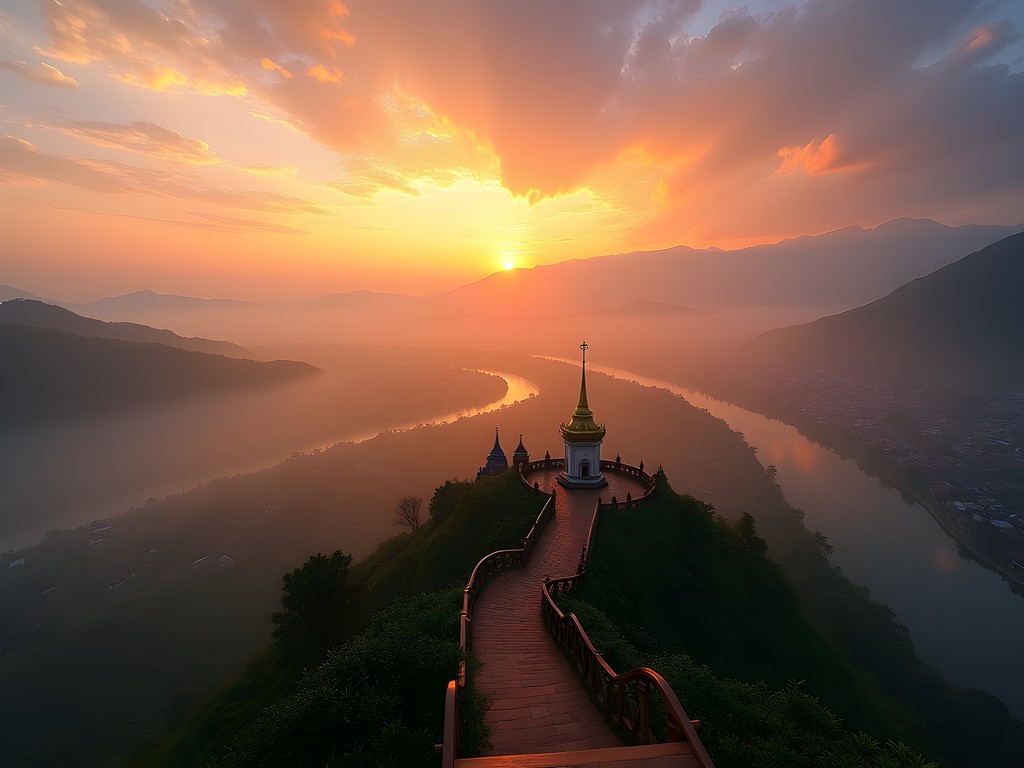
💡 Pro Tips
- For alms-giving, purchase offerings from local markets rather than tourist vendors selling overpriced, often inappropriate food
- Climb Mount Phousi for sunrise rather than the crowded sunset to experience a more contemplative atmosphere
- Bring a light jacket for early mornings – Luang Prabang can be surprisingly cool before the sun rises
Beyond the Famous: Hidden Temple Treasures
While Wat Xieng Thong deservedly captures attention, some of my most memorable moments came from exploring Luang Prabang's lesser-known temples. These quieter sanctuaries offer glimpses into daily spiritual life and often harbor unexpected artistic treasures.
Wat Xieng Mouane, nicknamed the "Monastery of the Perfect Happiness," sits just off the main tourist path but feels worlds away. When I visited, novice monks were receiving instruction in traditional arts, including the restoration of gold leaf applications. The head monk, noticing my interest, invited me to observe their work up close. The techniques being taught were virtually identical to those I'd seen artisans using at hot springs in Japan – a reminder of how sacred practices transcend borders.
Wat Visoun houses the city's oldest Buddha image and a unique watermelon-shaped stupa called That Makmo. When built in the early 1500s, it represented revolutionary architectural thinking. The caretaker shared that it had been destroyed during the 1887 invasion and painstakingly reconstructed using traditional methods in the 1930s – an example of the resilience of Lao cultural heritage despite historical challenges.
One afternoon, seeking shade from the tropical heat, I wandered into Wat Aham, where I discovered remarkable murals depicting the Vessantara Jataka – stories of Buddha's previous lives. An elderly monk noticed me studying them and, through basic English and elaborate gestures, explained the narrative sequence. These unexpected exchanges have always been the heart of meaningful travel for me.
For documenting these experiences, my travel journal became indispensable. Each evening, I'd record observations, sketch architectural details, and press flowers from temple gardens between its pages – creating a personal artifact that captures memories in ways digital photos cannot.
I found myself returning to these smaller temples throughout the week, noticing how they transformed with changing light and activities. Morning chanting, afternoon teachings, evening prayers – each visit revealed new dimensions of living spiritual practice rather than mere historical monuments.

💡 Pro Tips
- Visit Wat Mai to see the exquisite gold relief work on its facade – best viewed in late afternoon light
- Seek out Wat Pak Khan for its collection of rare Buddha statues in unusual postures
- Many smaller temples close during lunch hours when monks are eating – plan accordingly
Connecting with Local Artisans
My passion for connecting with artisans naturally extended to Luang Prabang, where many traditional crafts have direct ties to temple arts. The city has become a center for preserving techniques that might otherwise be lost to modernization.
Following a recommendation from a monk at Wat Mai, I visited Ock Pop Tok, a textile center where I watched master weavers create intricate patterns used in ceremonial temple hangings. The geometric motifs and natural dye techniques have remained unchanged for centuries. I spent a fascinating afternoon in their workshop learning how indigo, turmeric and other natural materials create the vibrant colors seen in temple textiles.
In the quiet back streets near Wat Xieng Thong, I discovered a small workshop where an elderly artisan crafted traditional Saa paper from mulberry bark – the same paper used for temple manuscripts and religious texts. His weathered hands moved with practiced precision, demonstrating a process that's remained virtually unchanged for generations. Through a young neighbor who translated, he explained that his family had supplied paper to the temples for seven generations.
Perhaps most fascinating was watching gold leaf being made by hand at a small family workshop. This impossibly thin gold is applied to Buddha images during devotional practices. The methodical hammering of gold between layers of bamboo paper requires extraordinary patience – 5-6 hours of continuous work to create leaves of breathtaking delicacy.
For documenting these artisan encounters, I relied on my pocket camera, which allowed me to capture detailed close-ups of intricate work without being intrusive. The flip screen proved particularly useful for capturing overhead shots of weaving techniques without disturbing the artisans' concentration.
What struck me most was how these crafts people view their work not merely as commercial production but as an extension of spiritual practice – each item created with mindfulness and purpose, often beginning workdays with the same meditative approach I witnessed in temple ceremonies.
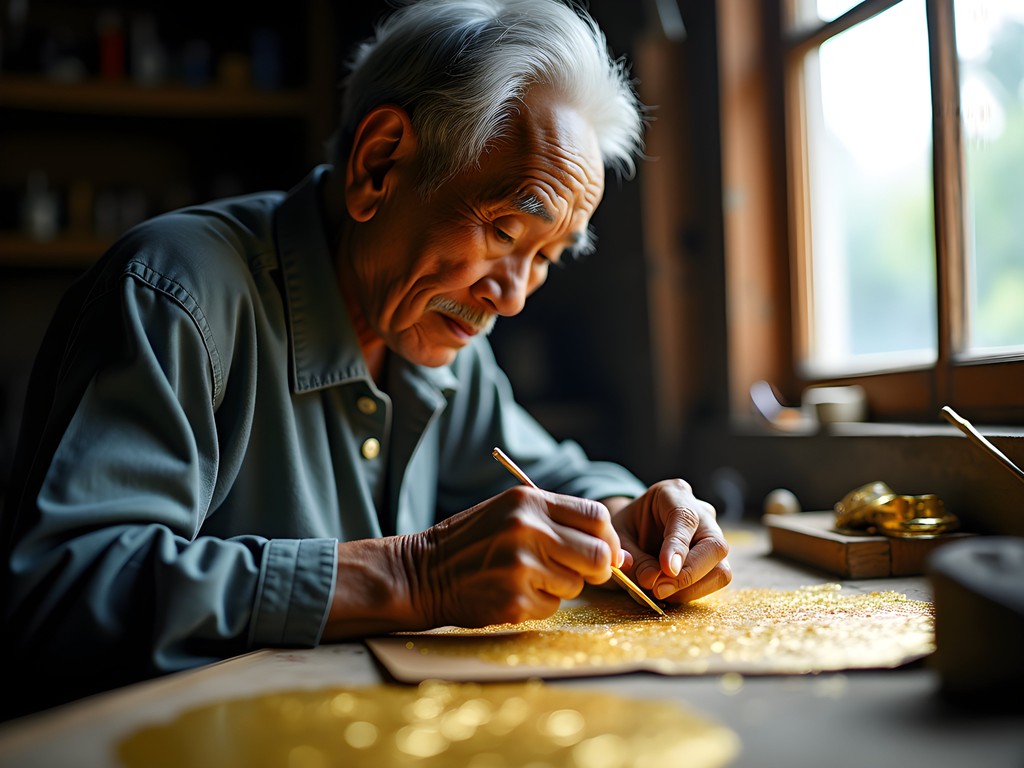
💡 Pro Tips
- Visit the Traditional Arts & Ethnology Centre for context on how craft traditions relate to different Lao ethnic groups
- Morning alms-giving ceremonies often feature handcrafted baskets and textiles that demonstrate living craft traditions
- Many workshops welcome visitors but photography may require permission – always ask respectfully
Sacred Waters: Temple Connections to the Rivers
My lifelong fascination with healing waters naturally drew me to explore the profound connection between Luang Prabang's temples and its rivers. The peninsula's sacred geography is defined by the meeting of the Nam Khan and Mekong rivers, which locals believe create a spiritually potent confluence.
Many temples are strategically positioned to face these waters, their architecture designed to create visual dialogues between built sanctuaries and natural elements. At Wat Xieng Thong, I discovered a rarely-visited rear terrace that offers spectacular views of the Mekong. A young monk explained that this orientation was intentional – the river's flow symbolizes impermanence, a central Buddhist concept.
During my visit, I was fortunate to witness a nam hua ceremony at a small riverside temple, where devotees release small boats (usually made from banana leaves) containing offerings into the current. This ancient practice symbolically transfers spiritual merit to deceased ancestors. An elderly woman crafting these delicate vessels invited me to participate, showing me how to fold the leaves and arrange flowers, incense, and a small candle.
The most moving river-temple connection came during Boun Suang Huea, a boat racing festival that coincided with my visit. Temple drums and chants accompanied the races, while monks blessed the boats and participants. What might appear to outsiders as merely a sporting event revealed itself as a deeply spiritual practice connecting contemporary communities to ancient animist beliefs that preceded Buddhism in the region.
For these riverside explorations, comfortable footwear is essential. My well-worn hiking sandals proved perfect for navigating between rocky shorelines and temple grounds, especially during spontaneous riverside ceremonies that involved wading into shallow waters.
These experiences reminded me that while hot springs first drew me to global sacred sites, the spiritual significance of water manifests in countless forms. In Luang Prabang, the rivers aren't merely geographical features but living entities that have shaped the city's spiritual landscape for centuries.

💡 Pro Tips
- Visit Wat Xieng Thong's rear grounds for the best views of the Mekong River
- Ask at your guesthouse about any upcoming water ceremonies – these aren't always advertised to tourists but visitors are often welcome
- The bamboo bridge crossing the Nam Khan (rebuilt annually) offers unique perspectives of riverside temples but is only present during dry season
Final Thoughts
As my week in Luang Prabang drew to a close, I found myself on a simple wooden bench beside the Mekong, watching the sunset illuminate Wat Xieng Thong's golden facade. The temple bells chimed softly with the evening breeze, blending with the distant chanting of monks. In this moment, I understood why UNESCO recognized this place as not just architecturally significant but culturally vital – these temples aren't relics but living centers of a spiritual tradition that continues to evolve while honoring its roots.
For travelers seeking authentic connections with Lao culture, these sacred spaces offer doorways to understanding that transcend typical tourist experiences. The temples of Luang Prabang invite us not merely to photograph their beauty but to witness how spiritual practice shapes daily life in this remarkable community.
I came seeking historical sites but departed with something far more valuable – a deeper appreciation for how sacred spaces nurture both cultural identity and human connection across generations. As you plan your own journey to this remarkable city, I encourage you to approach its temples not just as items on an itinerary but as invitations to slow down, observe, and perhaps discover unexpected dimensions of your own spiritual landscape.
✨ Key Takeaways
- Respect temple etiquette to have more meaningful experiences and interactions with monks
- Explore beyond the famous sites to discover quieter temples with unique artistic treasures
- Participate in morning alms-giving as a respectful observer rather than a photographer
- Connect temple visits with local crafts traditions to understand their cultural context
- Allow time for unplanned moments – some of the most profound experiences come from chance encounters
📋 Practical Information
Best Time to Visit
October to April (dry season, with November-February offering the coolest temperatures)
Budget Estimate
$50-75 per day including mid-range accommodation, meals, and temple entry fees
Recommended Duration
5-7 days minimum to explore temples at a relaxed pace
Difficulty Level
Easy To Moderate (Some Temples Require Climbing Stairs)
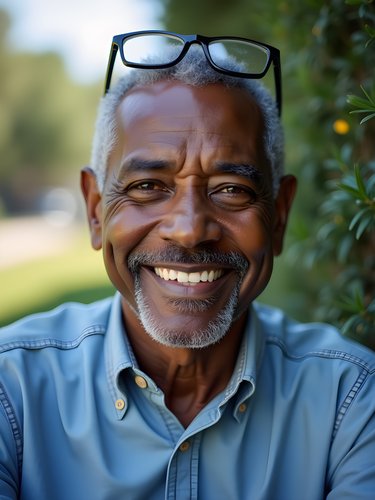
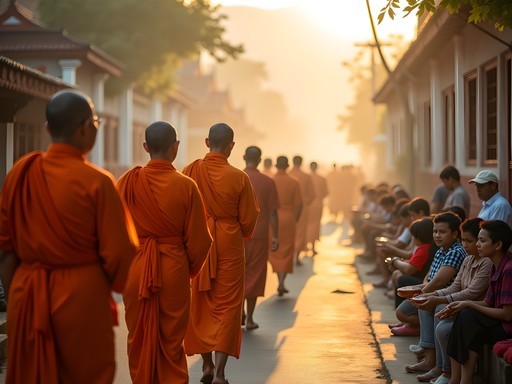

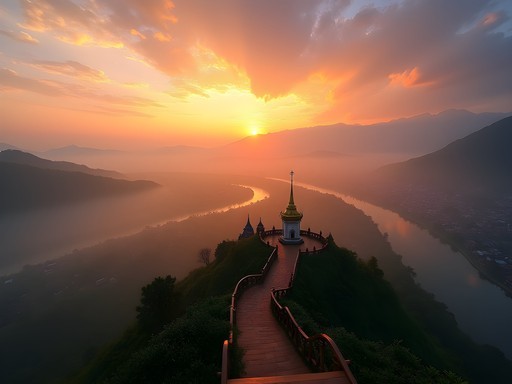
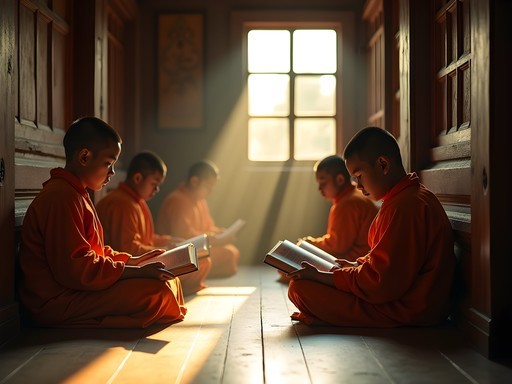

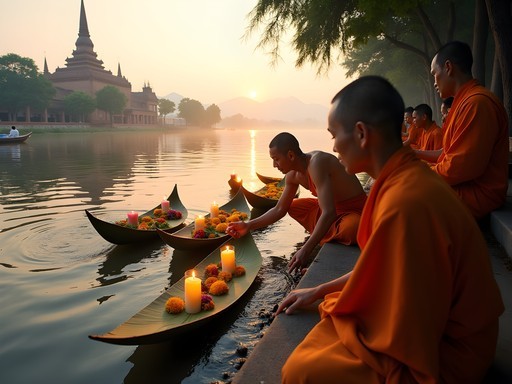









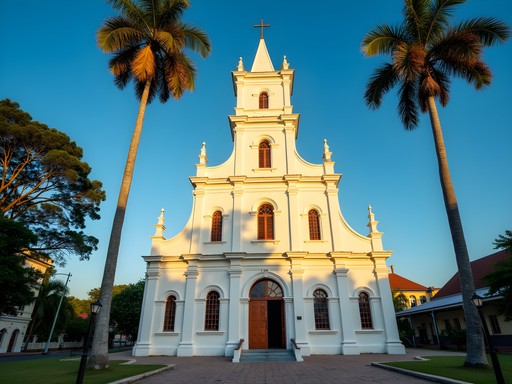
Comments
backpackperson
Those sunset photos by the Mekong are incredible! 😍
Taylor Moreau
Excellent piece, Justin. I've been to Luang Prabang several times for work and always make time to visit the temples. One gem you didn't mention is Wat Wisunarat (Wat Visoun), the oldest temple in the city with a distinctive watermelon stupa. It's less crowded and offers a fascinating look at a different architectural style. For anyone visiting during hot season (March-May), consider exploring temples in early morning or late afternoon - the midday heat can be quite intense. The museum in the former Royal Palace is also worth a visit for context on Laos' complex religious history. Looking forward to your next piece!
redlife
Wat Wisunarat was actually my second favorite! That watermelon stupa is so unique.
Jose McDonald
Justin, this post brought back so many memories! I spent two weeks in Luang Prabang last year and completely fell in love with the place. For anyone reading this and planning a trip, don't miss the lesser-known temples Justin mentioned! Wat Phonxay and Wat Sene are way less crowded but still incredible. Pro tip: there's a small monastery library at Wat Mai where sometimes monks practice English with visitors in the afternoons. One of my favorite memories was just sitting and chatting with a young monk about life while the rain poured outside. Also, if you have time, take a boat trip to the Pak Ou Caves with all the Buddha statues - it's about an hour upriver but totally worth it!
sunnywanderer
Going to Luang Prabang next month! How early do you need to get up for the alms ceremony? And is it really worth climbing Mount Phousi?
Jose McDonald
You'll need to be up before sunrise - around 5:30am in most seasons! And YES, Mount Phousi is 100% worth it, but go either early morning or late afternoon to avoid both crowds and heat. The sunset views are incredible but it gets packed. I used my compact binoculars to spot temples from up there - amazing perspective of the whole city!
sunnywanderer
Thanks for the tips! Early morning it is then. Not a morning person but sounds worth it!
hikingbackpacker
The alms giving ceremony was one of my favorite experiences in Luang Prabang. Justin, you captured the atmosphere perfectly! When I was there last year, I made the mistake of not researching proper etiquette beforehand. For anyone planning to go, definitely dress modestly and stay a respectful distance from the monks. Also worth noting that Wat Xieng Thong is even more magical in the late afternoon when the sun hits the mosaic walls. Did you get a chance to visit Wat Visounnarath with the watermelon stupa?
Jose McDonald
Totally agree about the afternoon light at Wat Xieng Thong! Those glass mosaics are incredible when they catch the sun. I actually have some tips on my channel about photographing temples without disturbing worshippers - it's all about patience and respect.
hikingbackpacker
Thanks Jose! Will definitely check out your tips. The photography part was tricky for me too.
Savannah Walker
Justin, your description of the morning mist over the Mekong took me right back! I spent three weeks in Luang Prabang last year documenting the lesser-known temples. If anyone's interested in going beyond the main circuit, I highly recommend Wat Phonxay Sanasongkham - it's about 5km outside the main town but practically empty of tourists. The resident monks there were incredibly welcoming and showed me ancient manuscripts they're preserving. I found having a good camera with a wide-angle lens essential for capturing the temple interiors. I used my travel tripod for those low-light shots inside the temples since flash photography is (rightfully) forbidden in most sacred spaces.
wanderlustnomad
Those hidden temples you mentioned sound magical! Adding them to my list!
backpackblogger
Great post! I'm heading there next month - what should I wear when visiting the temples? Any specific dress code?
tripqueen
Cover shoulders and knees! I brought a light scarf that I could wrap as a skirt or shoulder cover. Super useful.
springphotographer
That opening shot of the morning mist over the Mekong is absolutely stunning! What time did you have to get up to capture that beautiful light?
hikingfan
Did you visit Wat Phra That Chomsi on top of Mount Phousi? Worth the climb?
Hannah Woods
Not Justin, but I'd say absolutely worth it. The climb isn't too strenuous (about 300 steps) and the panoramic views of the Mekong and Nam Khan rivers are spectacular. Go for sunset, but arrive early to get a good spot as it gets crowded. The golden stupa at the top is beautiful, but honestly, it's the views that make it special. Bring water and a hat if going midday.
Venture X
Premium card with 2X miles, $300 travel credit, Priority Pass